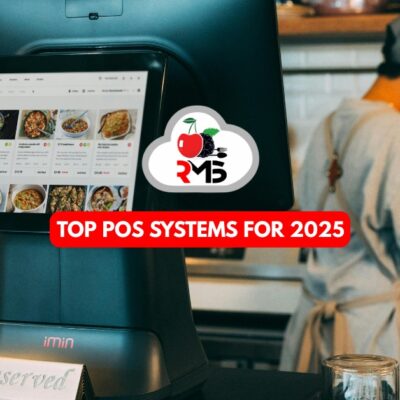Today’s digital-first society sees the fight for restaurant clients online, not only in the kitchen or dining area. With their large advertising budgets and well-known brand awareness, big chain eateries often dominate search results. Yet little, locally owned eateries need not live in the shadows. Local restaurants may create their own niche and aggressively compete in local searches with smart strategies designed especially for internet visibility.
If you’re a small restaurant owner wondering how to get your eatery noticed online despite the competition, this guide is for you. Here’s how you can leverage digital marketing and SEO tactics to level the playing field and attract hungry customers searching nearby.
1. Understand the Power of Local Search
Most people looking for a place to eat start with a quick online search — often with a location-specific query like “best pizza near me” or “family-friendly restaurants in [city].” According to studies, 46% of all Google searches have local intent, and 78% of local mobile searches result in an offline purchase.
Big chains may have the advantage of brand recognition, but local searches are all about relevance and proximity. Search engines want to show the user the most helpful, nearby options, which means your restaurant can rank well if you optimize for local signals.
2. Optimize Your Google Business Profile (GBP)
Your Google Business Profile (formerly Google My Business) is your single most powerful tool for local SEO. It’s the first thing potential customers see on Google Search and Maps when they look for nearby restaurants.
What to do:
- Claim and verify your profile: Ensure you have control over your restaurant’s profile on Google.
- Complete every section: Add your address, phone number, website, hours, menu, photos, and services.
- Choose the right categories: Be specific — instead of just “Restaurant,” use “Italian Restaurant,” “Vegan Café,” or “Family Restaurant.”
- Encourage reviews: Positive customer reviews boost your credibility and ranking.
- Post regularly: Share updates, special offers, or events directly through your GBP.
Small restaurants that keep their Google profile accurate and engaging often appear above big chains in local map packs.
3. Focus on Local Keywords with a Twist
Keywords are still the backbone of SEO. But instead of competing for broad, highly competitive terms like “best burger,” aim for local long-tail keywords that reflect your specific location and niche.
How to find them:
- Use tools like Google Keyword Planner or Ubersuggest to discover terms people use in your area.
- Think like your customer: “best brunch in [neighborhood],” “family-friendly dining near [landmark],” or “late-night food in [city].”
- Don’t forget variations: “gluten-free pizza [city]” or “romantic dinner spots [city].”
Integrate these keywords naturally into your website content, menu descriptions, blog posts, and metadata. This targeted approach is less competitive and more likely to attract customers ready to visit.
4. Create Hyper-Local Content
Big chains often use generic content that appeals to a wide audience, but you have the advantage of locality. Build content that speaks directly to your community and local events.
Content ideas:
- Blog about local food festivals or farmers’ markets you participate in.
- Share stories about your sourcing from local farms or artisans.
- Feature interviews with regular customers or your chef’s inspiration.
- Highlight neighborhood guides or “best spots to visit” near your restaurant.
This type of content builds trust with locals and signals to search engines that your restaurant is an integral part of the community, helping your rankings.
5. Optimize Your Website for Mobile and Speed
Local searches are often done on mobile devices by people already on the go and hungry. If your website is slow to load or isn’t mobile-friendly, you risk losing customers before they even see your menu.
Key website tips:
- Use responsive design that looks great on phones and tablets.
- Compress images and minimize code to speed up load times.
- Make sure contact info, menus, and reservation buttons are easy to find.
- Implement schema markup for restaurants to help search engines understand your content better (e.g., menus, reviews, location).
A seamless mobile experience can give your small restaurant an edge over big chains with outdated or cumbersome websites.
6. Harness the Power of Online Reviews and Reputation Management
Online reviews are one of the biggest decision factors for diners. Small restaurants can use reviews as a competitive advantage since they often have closer relationships with customers and can provide more personalized experiences.
How to manage reviews effectively:
- Ask happy customers to leave honest reviews on Google, Yelp, TripAdvisor, and Facebook.
- Respond promptly and professionally to all reviews, positive or negative.
- Use feedback to improve your services.
- Showcase glowing reviews on your website and social media.
Authentic, positive reviews can build trust and improve your local search rankings — and customers love to support small businesses with a great reputation.
7. Leverage Social Media with Local Targeting
Social media platforms like Instagram, Facebook, and TikTok are powerful tools for engaging with your community and driving local traffic.
Tips for social media success:
- Post mouth-watering photos of your dishes with local hashtags.
- Share behind-the-scenes content or stories about your team and customers.
- Run geo-targeted ads to promote specials or events to people near your restaurant.
- Collaborate with local influencers or food bloggers for greater reach.
Big chains often have big budgets but may lack the authentic local connection that your social presence can create. Use social media to tell your unique story and attract locals.
8. Build Local Partnerships and Get Listed Everywhere
Local citations mentions of your business name, address, and phone number on various websites — play a big role in local SEO.
Actions to take:
- Ensure your business information is consistent across Yelp, TripAdvisor, OpenTable, and local directories.
- Partner with nearby businesses, chambers of commerce, or community organizations for cross-promotion.
- Get featured on local blogs or news websites.
These local backlinks and citations boost your restaurant’s authority and make you more visible in local search results.
9. Use Paid Local Advertising Smartly
While organic SEO is key, small budgets can be used effectively for targeted paid campaigns.
Examples:
- Google Ads with location targeting to capture “near me” searches.
- Facebook and Instagram ads targeting local demographics.
- Sponsored posts or ads on local food apps.
The key is to focus on highly targeted ads that reach nearby customers ready to make dining decisions.
10. Monitor, Analyze, and Adapt
SEO and local marketing are ongoing efforts. Use tools like Google Analytics and Google Search Console to monitor your website traffic, keyword performance, and customer behavior.
What to track:
- Which keywords bring the most visitors.
- Which pages keep visitors engaged.
- How many clicks your Google Business Profile gets.
- What online reviews say and how they impact bookings.
Adjust your strategies based on data to continuously improve your local search presence and outshine the big chains.
Conclusion
Competing with big restaurant chains online might seem daunting, but small, independent restaurants have unique strengths that can help them thrive in local search results. By focusing on local optimization, authentic community engagement, and smart use of digital tools, your small restaurant can not only get found but become a beloved local favorite.
Remember: it’s not about outspending the big guys; it’s about outsmarting them with personalized, localized, and consistent digital marketing. The next time someone nearby searches for a great meal, make sure your restaurant is the answer they find first.




